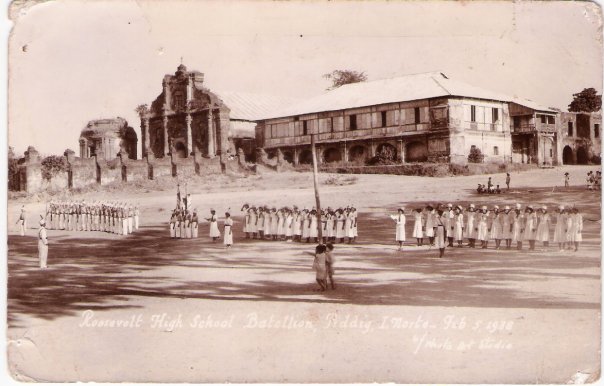The Saint Anne Parish Church of Piddig was formally closed to the public last September 14, 2014. Earlier, engineers from the National Commission for the Culture and Arts (NCCA), Provincial government of Ilocos Norte, Municipality of Piddig and the Department of Public Works and Highways declared the building "unfit for human occupancy". This prompted the Sanguniang Bayan of Piddig to pass Resolution 2014-09-138 declaring the building unfit for human occupancy and must be closed.
Founded in 1810, The Saint Anne Parish Church is the only church in Ilocos Norte to be built on top of a hill. It is also the only old church in the country that does not front the west. Experts say the facade is inspired by the baroque Jesuit Church in Il Gisu, Rome that was built in 1568.
The Saint Anne Church had been a part in our country's struggle for independence. It became the headquarters of General Manuel Tinio and his guerrillas while they were repelling advancing American soldiers in August of 1898. The parish priest at that time, Fr, Jose Castro joined the revolution and later became the first priest to join the Philippine Independent Church founded by General Gregorio Aglipay in 1902.
(The Sain Anne Parish convent after the war, became the Saint Anne Academy in 1965)
O'Day's cruelty ended only when General McArtur's forces headed by Captain Valera landed in Ilocos Norte. O'Days' 121st Infantry Regiment was put under the Command of General Russel Volkman's USAFNL based in Luna, La Union. As more guerillas were assembled in Piddig for the final assault on the remaining strongholds of the Japanese Imperial Army in northern Luzon, the 15th Infantry Regiment was born. The 15th Infantry Regiment Memorial was erected at the town plaza (see picture below) just in front of the Saint Anne Church. This serves as a reminder of the role of Piddig and the Church in the liberation of the country during the Second World War.
The 15th Infantry fought side by side with the other guerilla groups under Col. Volkman in hunting the remaining Japanese forces in Ilocos Norte, Ilocos Sur, Abra, La Union, Bessang Pass and Benguet where they captured General Yamashita. In return, the Saint Anne Church suffered severe damages caused by bullets from caliber 50 machine guns and bombs from Japanese Army planes. The enemy soldiers on the ground torched the whole of Piddig. After the onslaugh, only the church ruins were left of Piddig. The rest were just ashes. Piddig was the only town in Ilocos Norte to suffer this much because it was the resistance capital of Ilocos Norte and Northern Luzon.
The church was finally restored in 1965. The convent ruins was made the Saint Anne Academy.
(L-R): Rev. Erickson M. Josue. Diocese Historian; Most Rev. Renato P. Mayugba, Bishop Diocese of Laoag; Mario Tejada, SB Secretary; Mrs. Delia Bayag; ABC Pres. Georgina Guillen; PPC President Edward Pascua; Antonio Ventura; Mayor Eddie G. Guillen; Rev. Lawrence Torreflores and ex-District Engr. Leonardo Foronda.The fate of the Saint Anne Church is still hanging. The engineers from the NCCA has yet to decide if the building is fit for renovation or not and if it is qualified to become a historical site. Once qualified a historical site, the government can help in the restoration. But the process will be a long one.







